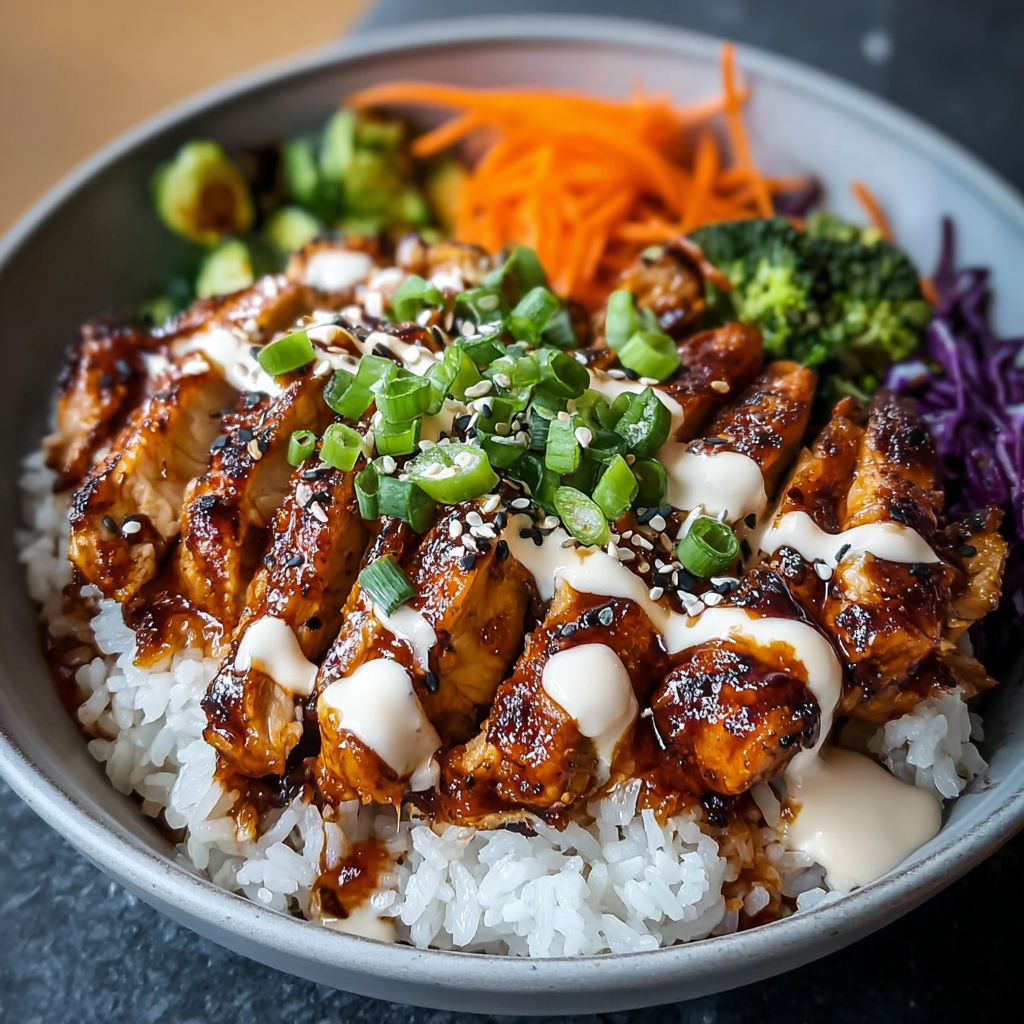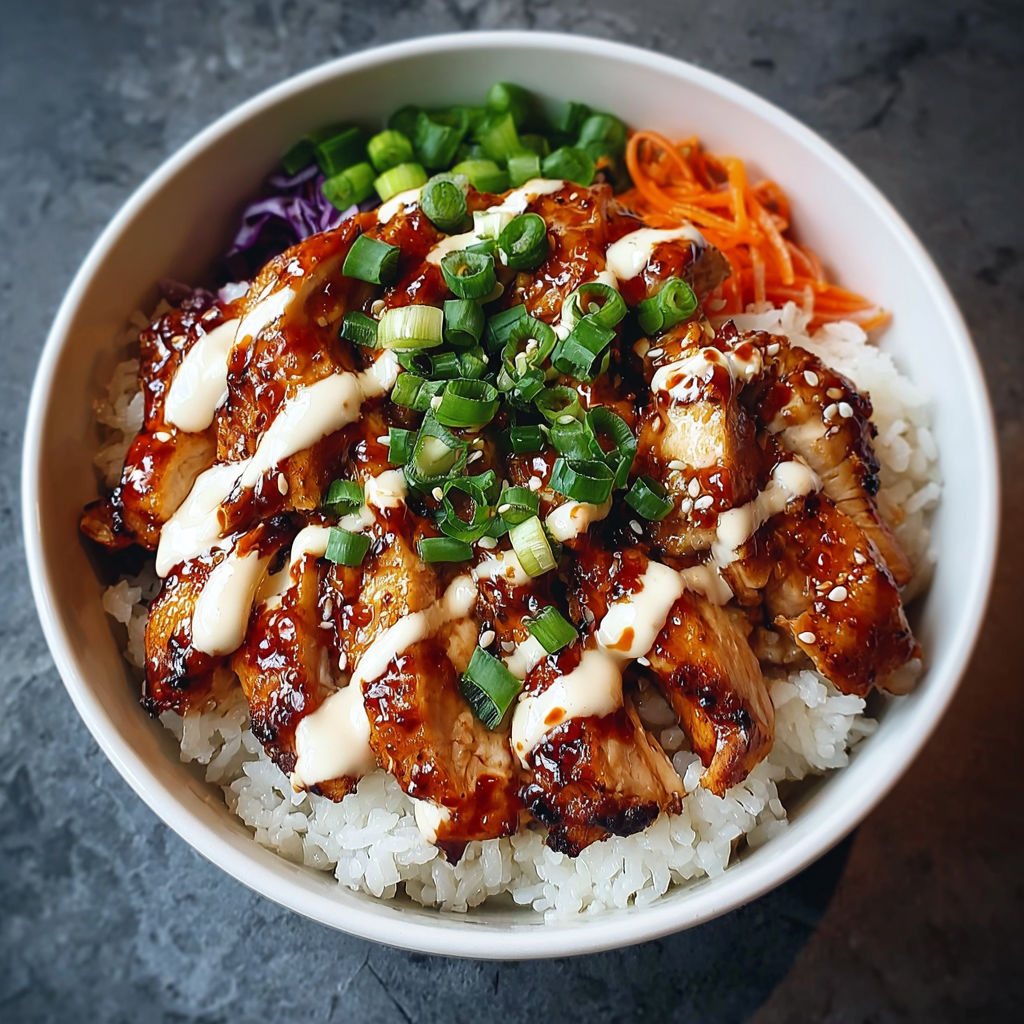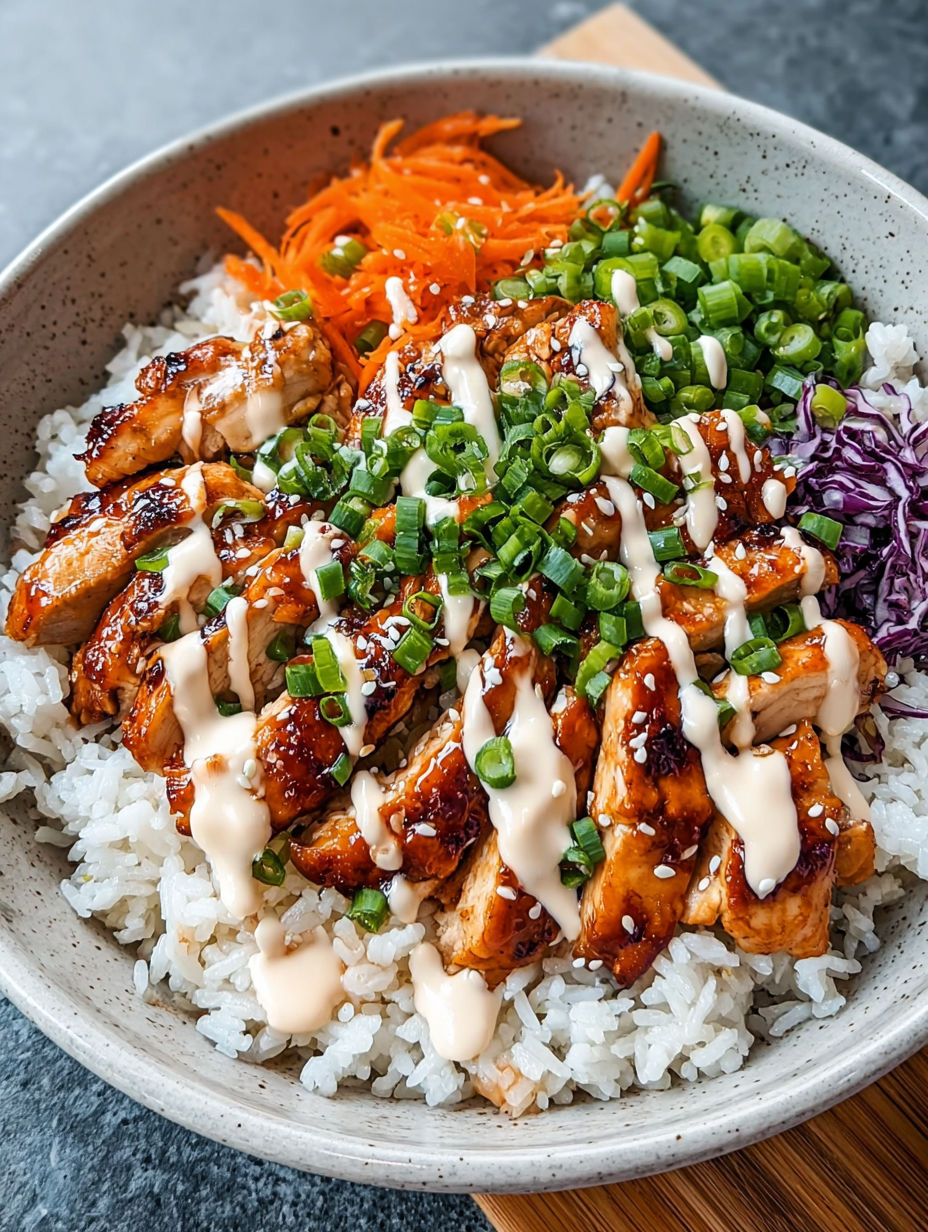 Pin
Pin
This Korean BBQ chicken bowl recipe brings authentic Korean flavors right to your kitchen with minimal effort. The balance of savory chicken, colorful vegetables, and that irresistible gochujang cream sauce creates a restaurant-quality meal that's surprisingly easy to make at home.
I first made these bowls after visiting a Korean restaurant with friends and becoming obsessed with gochujang. Now these bowls are my go-to whenever I'm entertaining guests who think they don't like spicy food they always end up asking for the recipe.
- Chicken breast sliced thinly against the grain for maximum tenderness
- Soy sauce provides the savory umami foundation for the marinade
- Sesame oil adds that distinctive nutty aroma that defines Korean cuisine
- Gochujang paste is the star ingredient giving both spice and depth
- Heavy cream balances the heat of the gochujang in the sauce
- Honey adds necessary sweetness to round out the flavors
- Mixed vegetables add color nutrition and textural contrast
- Green onions provide a fresh bright finish
- Sesame seeds offer a pleasing crunch and visual appeal
- Cooked rice preferably medium grain for the perfect texture
How To Make Korean BBQ Chicken Bowls with Gochujang Cream Sauce
- Marinate the chicken
- Combine sliced chicken breast with soy sauce and sesame oil in a bowl making sure each piece is well coated. Let it rest for at least 30 minutes the longer the better as this tenderizes the meat and infuses it with flavor. For best results marinate up to 4 hours in the refrigerator.
- Prepare the gochujang cream sauce
- In a small bowl whisk together the gochujang paste heavy cream and honey until completely smooth. Start with less gochujang if you're sensitive to heat you can always add more to taste. The sauce should be pourable but thick enough to coat the back of a spoon.
- Cook the chicken
- Heat a large skillet over medium high heat until hot. Add the marinated chicken pieces in a single layer working in batches if necessary to avoid overcrowding. Cook for about 3 to 4 minutes per side until golden brown and cooked through. Transfer to a plate and tent with foil to keep warm.
- Stir fry the vegetables
- In the same pan add your mixed vegetables and stir fry for about 3 to 5 minutes until they become tender crisp. The residual marinade in the pan will season the vegetables beautifully. If the pan seems dry add a touch more sesame oil.
- Assemble the bowls
- Start with a base of warm rice in each bowl. Arrange the cooked chicken and vegetables on top. Drizzle generously with the gochujang cream sauce. Finish with a sprinkle of chopped green onions and sesame seeds.
The gochujang paste is truly what makes this dish special. I discovered it years ago when exploring Korean cooking and now keep a tub permanently stocked in my refrigerator. Its complex flavor can't be replicated with regular hot sauce so it's worth seeking out at Asian markets or online.
Make Ahead Options
These bowls are perfect for meal prepping. You can prepare all components separately and store them in airtight containers in the refrigerator. The chicken and vegetables will keep for 3 days while the sauce stays good for up to 5 days. Keep the sauce separate until ready to serve to maintain the best textures. When reheating add a splash of water to the rice to prevent it from drying out.

Ingredient Substitutions
If you're looking to make this dish vegetarian substitute the chicken with firm tofu or tempeh. Press the tofu well before marinating to help it absorb more flavor. For a dairy free version replace the heavy cream with full fat coconut milk which adds a complementary flavor dimension. Short on time? Rotisserie chicken works beautifully here just toss it with some of the marinade ingredients and warm it through.
Authentic Korean Touches
To make this bowl even more authentic add traditional Korean side dishes known as banchan. Kimchi is the most well known but other options include pickled radish cucumber salad or spinach namul. These sides not only add authenticity but also create a more balanced meal with varied textures and flavors. Traditionally Korean meals aim to include five colors on the plate for nutritional balance consider adding ingredients to achieve this.

Recipe FAQs
- → How can I adjust the spiciness of the gochujang sauce?
You can control the spiciness by adjusting the amount of gochujang paste used in the cream sauce. Start with less (perhaps 1-2 teaspoons instead of a tablespoon) and add more to taste. Adding extra honey can also help balance the heat with sweetness.
- → What vegetables work best in these Korean BBQ bowls?
Bell peppers, carrots, and broccoli work wonderfully as suggested, but you can also incorporate spinach, zucchini, mushrooms, or bean sprouts. Choose vegetables with varying colors for visual appeal and complementary textures.
- → Can I make these bowls ahead of time?
Yes! You can prepare the components separately and store them in the refrigerator for 2-3 days. Keep the sauce separate and reheat the chicken and vegetables together before assembling with freshly warmed rice and sauce.
- → What protein alternatives work well instead of chicken?
Besides the suggested tofu option, you can use thinly sliced beef (like ribeye or sirloin), pork tenderloin, or even shrimp. For a plant-based alternative, tempeh or seitan would also work well with these flavors.
- → What sides pair well with Korean BBQ Chicken Bowls?
Traditional Korean sides like kimchi, pickled daikon radish, or cucumber salad complement these bowls perfectly. You might also enjoy a simple miso soup or gyoza dumplings as appetizers.
- → Where can I find gochujang paste?
Gochujang is available in most Asian grocery stores, the international aisle of well-stocked supermarkets, or online retailers. Look for it in red plastic tubs or squeeze bottles. In a pinch, you can substitute with sriracha mixed with a bit of miso paste, though the flavor profile will be different.
